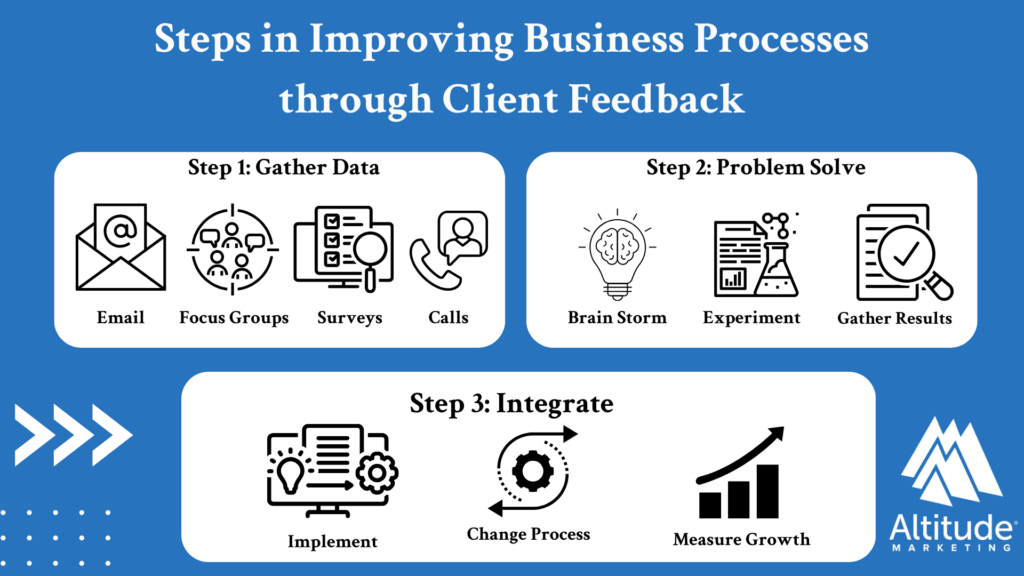B2B client retention is vital in today’s business-to-business landscape for growth and profitability. Studies show it costs less to retain existing clients compared to acquiring new ones. In the B2B world, with long sales cycles and large average contract value, losing a single client has massive repercussions. Which means, while you adopt marketing strategies that aggressively change new leads, you also need to emphasize tactics that keep your existing clients satisfied.
This article presents seven marketing strategies you should execute to effectively retain your existing client base. Do so successfully and you’ll protect existing revenue, freeing up resources to chase new business and achieve consistent growth.

7 Essential Client Retention Strategies
Keep it Personal With Data
It’s easy to feel buried by troves of data, especially when your customer base grows beyond the scale of a simple organizational system.
That’s why automation and data analytics are crucial to help you get the right information you need at the right time. Using a CRM, combined with contact automation, won’t just save you time–it helps you segment your customer base into precise categories, allowing you to speak to them on a personal level. Your customers will notice the individual attention, and you will save time.
In addition, data analytics can determine at-risk customers. Knowing information like average churn rate or flagged actions can help you take a proactive approach to retaining a client that might be considering other options.
This degree of personalization can drastically improve service. Additionally, sending relevant, timely, personalized content enhances their customized experience.
Key Takeaways
- Incorporate metrics and digital tools to acquire data driven insights about your clients.
- Utilize these insights to personalize content and offerings.

Communication Should be Timely (and Useful)
Sustaining B2B customer relationships necessitates consistent two-way engagement. Regular check-ins with clients can improve their odds of renewal. But, you need to ensure your communication is useful and worth their time. Don’t reach out for the sake of staying in touch; come with information, feedback, or a new offering.
Regular check-ins don’t need to come just through email or a phone call. Consider producing content that keeps your entire client base in the loop. Strategies like:
- Launching a newsletter to demonstrate thought leadership and explore industry trends.
- Publish expert content on your website and social media.
- Host industry-specific webinars that gather experts across the businesses you serve.
Proactively showcasing expertise in the field can improve trust with new customers and existing clients alike, thus driving increased revenue.
Key Takeaways
- Initiate two-way interactions with clients to foster stronger relationships.
- Keep clients informed through real-time communication and frequent check-ins. Make sure to only showcase relevant content to your customer base.
Solicit Feedback

When you gather feedback, you accomplish three goals at once: 1) You provide another connection point with your client, 2) You prove you value their satisfaction, and 3) You instantly know about clients that might choose to leave.
Engaging directly with customers to address their concerns helps preserve the relationship. Analyzing patterns within the feedback received can create growth–acting on consistent criticism builds a cycle of trust and constant improvement in your core products.
Plus, customers who see improvement after providing feedback are more likely to stay (and refer other possible leads).
Key Takeaways
- Actively gather client feedback through surveys, interviews, and other means.
- Swiftly implement this feedback to proactively cater to customer needs.
Start With a Strong Foundation
No two clients encounter the same challenges. In the B2B space, when contract value is high and sales cycles long, you need to have a deep understanding of every single client’s needs. That starts with a detailed onboarding process that you can reference for years to come.
Ask questions to evaluate their needs thoroughly. Evaluate their infrastructure, processes, objectives and plans for future growth. Based on this assessment, tailor-made recommendations can be devised to address their challenges.
Gathering this foundational information right at the start saves time in the long run, and allows you to build a stronger partnership from the outset.
This approach goes beyond generic solutions and positions businesses as proactive partners. This creates a commitment to the success of clients.
Key Takeaways
- Be proactive in solving client pain points.
- Make sure to create customized solutions increases client satisfaction.
Build Trust
To close new leads you need persuasion. To keep them, you need trust. Prospects prefer brands that demonstrate transparency. Therefore it is essential to establish trust by communicating about your capabilities, costs involved, and limitations.
Research shows that 85% of consumers prefer transparent brands.
From a simple phone call to a fully accessible results dashboard, ensure that your client has easy access to understanding the value you’re providing.
Leveraging marketing solutions (like expert content, newsletters, videos, case studies, and white papers) is an effective way for your existing clients to see how your top-notch products improve their business.
Key Takeaways
- Stay proactive in informing clients about successes and possible problems.
- Regularly publish expert content that highlights your industry innovation and expertise.
Tech Can Help (When Used Right)
From online portals to mobile apps to a digital chatbox to a results dashboard, implementing a two-way communication tech stack allows your clients the freedom to keep in touch on their own schedule. Allowing them to accomplish tasks without the need for manpower also saves you time and resources.
Key Takeaway
- Implement portals, apps, and intelligent tools will enable self-service for clients.
- New technology offers convenience to clients while also providing connectivity.
Never Stop Learning
Your best customers might be the ones that teach you things. They are, after all, the first line in using your products and services in the real world.
That means your team needs to constantly strive to learn from your own clients. Provide necessary training for those who need to acquire new competencies. Go to conferences and webinars where you know your clients attend. Brainstorm ways to enhance your offerings by leveraging customer stories.
By actively involving customers in the feedback loop, businesses can not only survive but thrive.
Key Takeaways
- Make learning agility and skill development part of your company’s culture.
- Go where your clients go (conferences, events, and webinars)
Conclusion: Keeping Your Customers is Cheaper than Finding New Ones
The easiest way to protect revenue is to keep the clients you already have. That’s why it’s crucial, then, that your marketing and sales team don’t spend all of their time chasing new leads. Using similar tactics (with more personalization) to your regular sales funnel will keep your existing clients loyal–thus boosting your YOY revenue.
By implementing these seven strategies, you will be on the right path.
Ready to elevate your B2B marketing?
We help leading business-to-business brands hit their marketing goals. Get in touch to learn how Altitude Marketing can help you reach your peak performance.



